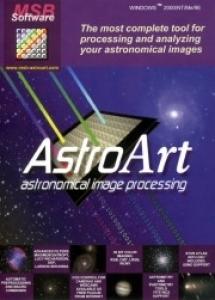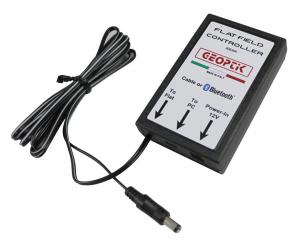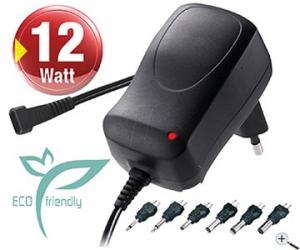- Telescopes
- Overview:
Telescopes - Achromatic Refractor
- Apochromatic Refractor
- Overview:
Apochromatic Refractor - ED Refractor - less color aberration than an achromatic
- SD APO - color free 2-element APO objective
- EDT APO - 3 element ED objective
- High End APO with 3-element APO objective - no color aberation
- Flatfield APO with flat field for Astrophotography
- All Apos and EDs from all manufacturers - large overview
- TS APO and ED from Japan with high quality optics
- Overview:
- Newtonian Telescopes
- Dobsonian Telescopes
- RC Ritchey Chretien Telescopes
- Casssegrain Telescopes
- Reflektor Telescopce with Lens Correcture
- Maksutov Cassegrain Telescopes
- GoTo Telescopes
- Solar Telescopes H-Alpha
- Overview:
- Mounts Tripods Rings Rails Power Supply ...
- Overview:
Mounts Tripods Rings Rails Power Supply ... - Mounts Equatorial with GoTo
- Mounts Equatorial without GoTo
- Mounts Azimutal with GoTo
- Mounts Azimutal without GoTo
- Mounts GoTo - Harmonic Drive
- Travel mounts for astro imaging
- Tripods Piers Polar Wedges
- Mount Control & Electronics
- Dovetail Clamps, Plates and Mount Adapters
- Tube Rings
- Power Supply
- Counterweights Balance Weights
- Mount Accessories - Other
- Overview:
- Telescope Accessories
- Overview:
Telescope Accessories - Eyepieces
- Barlows & Reducer Lenses
- Diagonal Mirrors and Prisms
- Binocular Viewers
- Finder Scopes
- Telescope Collimation and Test
- Cleaning Tools
- Transport and Storage
- Dust protection for Telescopes & Accessories
- Stray Light Protection
- Dewcaps and Heater
- Focusers, Adapters, Motorfocus
- Telescope DIY & Improvement
- Other telescope accessories
- Replacement Parts
- Overview:
- Filters
- Overview:
Filters - Color Filters and Color Filtersets
- Nebular Filters for Visual Observing
- Neutral-Density and Polfilter
- Photo Narrowband Nebular Filters
- Photo Broadband Filters
- Photo Planetary Filters
- Photo R-G-B and IR Cut Filters
- Photo - Filtersets
- Photometric Filters
- Clip Filter for DSLR Cameras
- Filter Wheels and Filterslider
- Solar Filters for white light
- Solarfilter for H-Alpha and Calcium
- Overview:
- Adaptors
- Overview:
Adaptors - Adapter 1,25" and 24,5mm
- Adapter 2"
- Adapter T2 - M42x0.75
- Adapter M48x0,75
- Adapter M54
- Adapter SC
- Adapter M63
- Adapter M68
- Adapter to other Threads
- Adapter Extensions
- Adapter camera bayonet
- Adapter Objective Filterthread
- Adapter Quick Changing , Rotation
- Adapter Eyepiece Projection
- Adapters Tilting
- Overview:
- Astrophotography and Photography
- Overview:
Astrophotography and Photography - Cooled Cameras
- Cameras without Cooling
- Deep-Sky Cameras uncooled
- Set-Offers Camera, Filter, Wheels
- Acessories for Cameras
- Travel mounts for astro imaging
- Imaging Correctors for Telescopes
- Autoguiding Cameras & Sets
- Everything for Guiding
- Focusing aids - Bahtinov mascs
- Flat Field foils and boxes
- Lenses for Cameras
- Piggyback Camera Holder
- Camera Bags, Photocases & more
- Digital Camera and Smartphone Adapter
- Other photo accessories
- Overview:
- Binoculars, Spotting Scopes, Microscopes, Range Finders
- Overview:
Binoculars, Spotting Scopes, Microscopes, Range Finders - Roof Prism Binoculars
- Binoculars with Porro prisms
- Binoculars from 100mm Aperture
- Binoculars with 1,25 inch eyepieces
- TSMX APO Binoculars
- Binoculars for Astronomy
- Binoculars Hiking Bird watching
- Monoculars - Opera Binoculars
- Accessories for Binoculars
- Spotting Scopes
- Range Finders
- Microscopy
- Bags for Phototripods & Binoculars
- Overview:
- Phototripods and Binomounts
- Books, Software
- Overview:
Books, Software - Books for Astronomy Beginners
- Star Charts and Planispheres
- Books about our Solar System
- Observing Tips for Amateurs
- Popular Astronomy Literature
- Teaching material
- Astrophotography books
- Telescopes, Observatories, Construction
- Calendars Yearbooks
- Software, Star Charts
- Books for Microscopers
- Books Nature and Animals
- Nature Photography TimeLapse
- Overview:
- Night Vision, Magnifiers, Weather, Domes & more
- Beginner Astronomy and Gift Ideas
- Second Hand & Special Offers
- New products
Manufacturer: Geoptik
Product number: 2023-2103-4
EUR219.00new
EUR 219,00
incl. 19 % VAT (DE)
The VAT indicated refers to that applicable in Germany. After logging in, the VAT amount is adjusted to the applicable VAT of the stored delivery country. Therefore, the final price may vary accordingly.
excl. 6.95 € shipping costs (DE)
more details to the shipping costs ...Please log in to calculate shipping costs to your country.
There are no reviews for this product
- Details..
- Technical data..
- In the box..
- Reviews..
The Geoptik flat field adapter solves the problem of unevenly illuminated deep-sky images. This effect is often caused by vignetting (inherent to all optical systems, more or less) or prisms of off-axis-guiders inside the optical path.
Problem solution is capturing an evenly lit background. With this "flat field", image processing software is able to remove the vignetting effect from the main picture. Here, we recommend taking several flat fields and combining them to one "master flat". Nearly all astromical image processing softwares (Astro Art, MaxIm DL ...) can handle this.
Advantage of the Geoptik Flatfield Adapter:
At the sky, an evenly lit background is nearly never present. Even if clouds, late dusk or fog appear as absolut evenly illuminated, in fact they aren´t. These errors will then be calculated into the latter picture. The Geoptik flat field adapter provides a true flat field - a first class reference. We recommend taking such flat fields in darkness to prevent stray light from entering the optical system.
Using the Flatfield Adapter:
This is very simple: Direct the telescope or lens roughly to the zenith and put the flatfield adaptor on the top of it. Switch the adaptor on. Now you have an even lighting on the chip, only changed by irregularities in the telescope or on the chip. Make flatfield exposures, we recommend 4. Make them in the darkness to avoid stray light adulterating the results. Now you have a base which can be combined to a "master flat".

The image above shows a typical flat field with obvious and slightly uneven vignetting. This is normal with most telescopes.
Technical details: Suitable for lenses / telescoeps up to 372 mm outer OTA diameter 27 mm thick. Locking with three nylon thumbscrews Powered by an external 12 V DC power source Weight: >1000 Gramms
Problem solution is capturing an evenly lit background. With this "flat field", image processing software is able to remove the vignetting effect from the main picture. Here, we recommend taking several flat fields and combining them to one "master flat". Nearly all astromical image processing softwares (Astro Art, MaxIm DL ...) can handle this.
Advantage of the Geoptik Flatfield Adapter:
At the sky, an evenly lit background is nearly never present. Even if clouds, late dusk or fog appear as absolut evenly illuminated, in fact they aren´t. These errors will then be calculated into the latter picture. The Geoptik flat field adapter provides a true flat field - a first class reference. We recommend taking such flat fields in darkness to prevent stray light from entering the optical system.
Using the Flatfield Adapter:
This is very simple: Direct the telescope or lens roughly to the zenith and put the flatfield adaptor on the top of it. Switch the adaptor on. Now you have an even lighting on the chip, only changed by irregularities in the telescope or on the chip. Make flatfield exposures, we recommend 4. Make them in the darkness to avoid stray light adulterating the results. Now you have a base which can be combined to a "master flat".

The image above shows a typical flat field with obvious and slightly uneven vignetting. This is normal with most telescopes.
Technical details:
| Maximum outer OTA diameter: | 372 mm |
| Thickness: | 27 mm |
| Light colour: | neutral white |
| Brightness: | dimmable |
| Voltage: | 12 V |
| Current: | 0.40 A |
| Power connector: | coaxial power connector 5.5 x 2.5 mm (tip positive) with adaptor from cigar lighter receptacle |
| Weight: | >1000 g |
How do I get a good flat field image?
A good flat compensates for edge shading (vignetting), but also for darkening caused by dust on the filter, sensor or corrector. The background becomes even, the contrast can be raised further to make finer details visible in faint nebulae. The following basic settings should be noted:How do I find the right exposure time with the shooting software, for example Maxim DL?
The ADU value (Analog Digital Units) helps here. Every capture program shows this value when you move the mouse over the image. In the center of the image, where the illumination is highest, the ADU value is highest. The longer you expose, the higher this value becomes. If the ADU value is higher than the maximum value of the camera, the image is overexposed. A camera with 16 bits has a max. ADU value of 65536, one with 14 bits has 16384, one with 12 bits only 4096.
The exposure time of the flat should be so short that in the middle of the flat the ADU value is at most 50% of the maximum value of the camera. Then the flat looks well exposed. We recommend to take at least 10 flats per exposure and to process them to a "master flat".
If the flatfield box is too bright, that means it always produces overexposed images, then a white paper, which is fixed in the flatfield box, helps. This will dim the light and allow for slightly longer exposure times.
Recommended accessories
Books
General Accessories
Power Supply
Reviews













